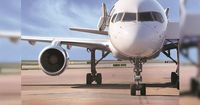India’s aviation sector is soaring—quite literally. Over the past decade, the number of passengers boarding flights in the country has more than doubled, rising from 116 million to a staggering 234 million. The nation’s aircraft fleet has also ballooned, growing by over 100% to 841 planes. And with Indian carriers placing orders for more than 1,300 new aircraft—one of the largest order books in the world—the skies above India are only going to get busier. But as the industry takes off, a pressing question looms: can India’s aviation regulator, the Directorate General of Civil Aviation (DGCA), keep up?
On October 9, 2025, according to Bloomberg and Mint, the DGCA made a bold move. The regulator formally requested greater autonomy and increased funding, aiming to bring its powers and resources in line with those of its global peers. The stakes are high. The DGCA’s ability to oversee the world’s third-largest domestic aviation market is being tested as never before—and officials say they need more muscle to ensure safety and efficiency as the sector expands.
Currently, the DGCA operates under India’s Civil Aviation Ministry. Unlike the United Kingdom’s Civil Aviation Authority (CAA) or the European Union Aviation Safety Agency (EASA), which are independent bodies, the DGCA’s hands are tied when it comes to hiring, budgeting, and developing its own training programs. The Federal Aviation Administration (FAA) in the United States, while part of the Department of Transportation, enjoys relatively more autonomy than its Indian counterpart, as industry insiders told Mint.
What does the DGCA want? At the top of the wish list is the authority to independently recruit and offer competitive salaries to attract qualified professionals. As it stands, the regulator struggles with limited manpower and resources. As of July 2025, the DGCA had filled only 553 of its 1,063 technical posts. It employs 4,295 air traffic controllers—far fewer than the FAA, which boasts 46,170 employees, including 14,000 controllers and 7,000 safety inspectors, according to Mint.
Funding is another sore spot. For the year ending March 31, 2025, the DGCA was allocated just $38 million. Compare that to the FAA’s $23.1 billion budget for fiscal 2024. The EASA’s 2024 allocation was eight times that of the DGCA, and the UK’s CAA received nearly six times as much in 2023. The numbers are stark, and they underscore the challenge India faces as it tries to match the regulatory standards and oversight capabilities of other major aviation markets.
This isn’t just a matter of pride or bureaucratic turf wars. Safety is on the line. The recent Air India crash, which killed all but one passenger and triggered a system-wide audit, has amplified concerns about the DGCA’s capacity to ensure the safety of India’s rapidly growing air travel sector. Any capacity constraints risk raising questions about the regulator’s ability to keep passengers safe as the skies grow more crowded.
“The DGCA is seeking increased funding to support regular training programs for its staff,” people familiar with the matter told Mint, speaking on condition of anonymity due to regulatory rules. Right now, the DGCA lacks a formal training module, and funding constraints have hindered its efforts to develop specialized programs in collaboration with domestic and international institutions. This shortfall makes it difficult to deploy qualified inspectors across the country—especially for certain aircraft types in regions where trained personnel are scarce.
India’s aviation boom has been nothing short of remarkable. The country is now the third-largest domestic aviation market in the world, trailing only the United States and China. The surge in passenger numbers and aircraft orders signals a bright future for the industry, but it also means the regulator’s workload is set to increase dramatically in the coming years. The DGCA’s staff and resources, however, have not kept pace with this explosive growth.
Industry experts warn that without significant changes, India could struggle to maintain the high standards of safety and oversight required in such a fast-evolving landscape. The call for autonomy isn’t just about matching the prestige of the FAA, CAA, or EASA—it’s about having the tools and flexibility to respond to the unique challenges posed by India’s aviation boom.
Unlike its global counterparts, the DGCA is still tethered to government processes that can slow down recruitment and limit its ability to offer salaries competitive enough to attract top talent. “The Directorate General of Civil Aviation, or DGCA, wants authority to independently recruit and offer competitive salaries to attract qualified professionals,” Mint reported. This autonomy could help the regulator build a workforce that’s up to the task—especially as Indian airlines prepare to take delivery of more than 1,300 new planes in the coming years.
The gap in resources is glaring. The FAA’s budget allows it to run extensive training programs, maintain a large staff of inspectors and controllers, and invest in cutting-edge safety technologies. The EASA and CAA, with their independent status and robust funding, are similarly well-equipped. In contrast, the DGCA’s funding is just a fraction of what these agencies receive, limiting its ability to develop and implement the kinds of advanced oversight and safety programs that are standard elsewhere.
One of the most pressing issues is the lack of a formal training module for DGCA staff. Without the ability to run regular, specialized training programs—especially in partnership with international bodies—the regulator risks falling behind on global best practices. This is particularly concerning when it comes to deploying inspectors for new and advanced aircraft types, many of which will soon be entering service in India thanks to the massive order backlog.
As the aviation sector continues its upward trajectory, the DGCA’s push for autonomy and funding has taken on new urgency. The regulator’s leaders argue that without these changes, India risks not only falling short of international standards but also undermining the safety and confidence of millions of passengers who rely on the country’s airlines every year.
For now, the DGCA and India’s Aviation Ministry have not responded publicly to requests for comment on the regulator’s demands. But the message from within the industry is clear: if India wants to remain a leader in the global aviation market, it must invest in the people and systems that keep its skies safe.
The next few months will be crucial as policymakers weigh the regulator’s plea. With the world watching and India’s aviation sector poised for even greater growth, the outcome could shape the future of flight in the country for years to come.




